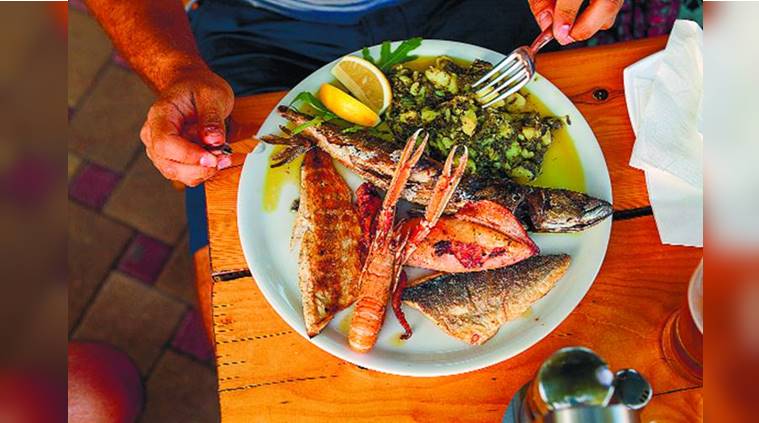 Eating alone is a little-appreciated activity.
Eating alone is a little-appreciated activity.
In The Terracotta Dog, Italian crime fiction writer Andrea Camilleri’s second novel in the Detective Montalbano series, the sleuth draws an anguished remark from the owner of a restaurant he frequents for “eating without conviction”. Montalbano had wolfed down an appetiser of shellfish and then had two sea perches, “so fresh they seemed to be still swimming in the sea”. That was out of character. The detective has a reputation for being discerning in matters related to dining. He usually eats slowly, savouring every morsel. “It is true. I have something in my mind,” he responds. But that seems to hurt the restaurant proprietor even more: “The mind should be forgotten when the Lord in His grace puts such perches in front of you.”
Arguably Italy’s best-loved fictional detective, who has a steady following in the English-speaking world, Salvo Montalbano is also a gastronome who inspires food tours in his native Sicily, recipes are dedicated to him and columnists and bloggers hold forth on how best to improvise on the dishes the inspector’s zestful housekeeper Adelina fills his refrigerator with — fish fresh from the sea, melt-in-your mouth octopus, exquisite nutty cakes, lip-smacking pasta. Montalbano, however, defies a cardinal stereotype of a foodie. He is a loner. The detective is well-liked and respected — despite being foul-mouthed. Women of all ages, find him attractive but he never has friends over for a meal. His lover, Livia, lives a few hundred kilometres away and is most often a voice on the phone. Except on the rare occasion, when he is invited for a meal by the commissioner or his friend, the TV news anchor, Zito, Montalbano’s trysts with food are in solitude. He is not given to feasting.
Solitary eaters like Montalbano are somewhat of a sociological enigma. In popular and academic literature, meals are about love, bonhomie, gifting, making friends, cementing social relationships. Dining is about conversations, even when it’s just a nod of appreciation for the fare. Food is about social ties, even when it is an instrument of exclusion. The anthropologist Claude Levi-Strauss saw food as a metaphor for culture. It is about identity and heritage. In an influential essay, the historian Fellipe Fernandez Armesto wrote, “The companionable effects of eating together help to make us human. The little links which bind households together are forged at the table. The stability of our homes probably depends more on regular mealtimes than on sexual fidelity or filial piety”.
Eating alone, in contrast, is a little-appreciated activity. In fact, it is often deemed a pathological product of a world in which the microwave has replaced the dining table as the centre of the eating universe. There are good reasons, of course, for the bad rap that lonely eaters get. People do eat at homes, today. But family mealtimes have been crowded out of daily routines: Different members have different eating times with the newspaper, computer table or the TV as their companion. Workers bolt down their lunch at workstations — most times with their attention centred on the task at hand — and solitary snackers munch ready-to-eat finger foods without any fealty to aromas or textures. “People alienated from the comradeship and discipline of the common table starve and stuff themselves into extremes of emaciation and obesity,” wrote Fernandez Armesto.
But does the table for one always mean an unhealthy eater? Surely not. There is much joy to be had from eating at one’s pace without having to partake in small talk or being mindful of awkward silences. Coffee need not always be about conversations. Focusing on the aroma steaming from a good cuppa could be as relaxing as taking a walk in a park. A good meal in silence is a great way to wind down after a long day at work. Meals are a way of connecting with oneself.
Like everybody, Montalbano, too, has bad eating days. But meals for him are almost akin to a spiritual experience, a salve against the grime his profession lavishes on him. The detective likes to relish every bite in silence, it’s a habit that ties him to his long-distance lover who, too, “never opens her mouth when she eats”. Like most who eat in solitude, the celebrated detective is not lonely, even though he is a loner.